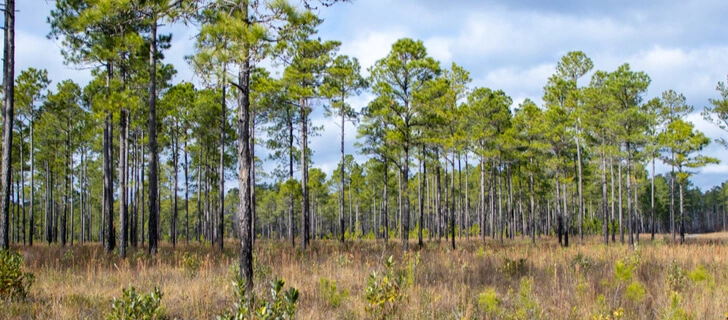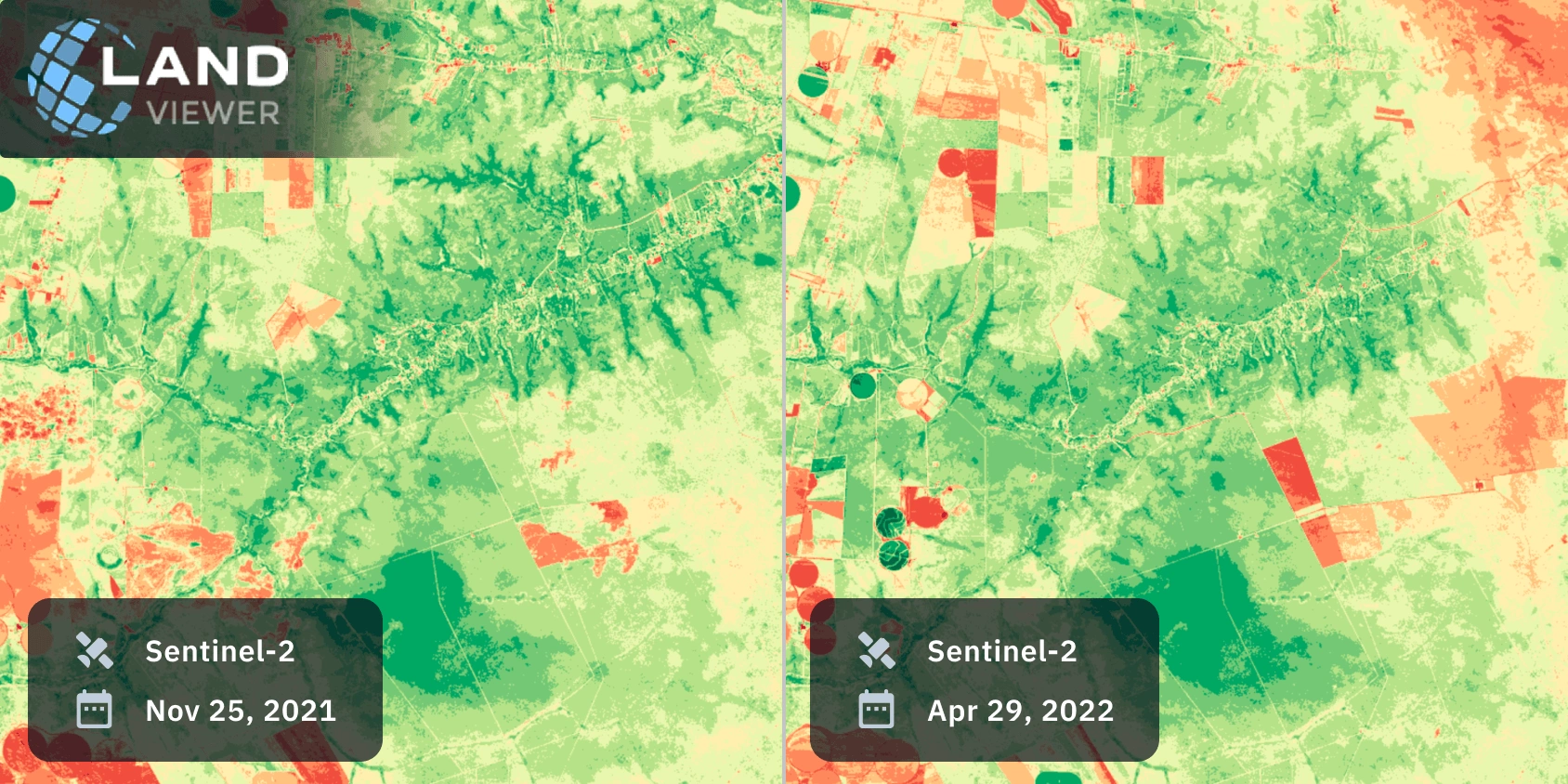
Forest Management: How To Plan & Implement
Forest management is vital for commercial forestry. Woodland is an essential ecosystem’s part: it provides clean air and water, is home to wild animals, and contains resources that we consume every day. Many people get the impression that this natural environment does not require human intervention. So, here is a question: why is forest management important for commercial activity? Without it, woodlands deteriorate and lose the qualities necessary for production purposes. In neglected form, such an environment is favorable for diseases and insects. There is also the danger of overpopulation, resulting in an increased rival for nutrients, water, and light. Woodland fires pose a severe threat to the environment, animals, and people. Landowners can maintain the optimal state of the ecosystem with the help of forest management. Modern technologies make this process even more efficient.
What Is Forest Management?
The purpose of forest management is to achieve environmental, social, and economic goals effectively. It can be
- the security of the forest and its inhabitants,
- the preservation of the ecosystem’s health,
- the improvement of the wood goods and services production.
Traditionally, national authorities control this process because woodlands usually cover a large extent, and their control requires severe administrative, financial, legal, and scientific decisions.
The importance of forest management is also about maintaining the health of our planet. Uncontrolled deforestation and pollution damage the environment. However, a unified system at the global level is not advisable because different regions have specific socio-economic conditions. It imposes additional responsibility on local governments and private enterprises to meet public needs, while maintaining a healthy environment.

Forest Management Planning
Due to planning, landowners determine the strategy for many years to come. In general, the following benefits of a forest management plan can be distinguished:
- making decisions on forest management and transferring information about its current state to other participants in the process;
- collecting an evidence base on compliance with legal obligations established for this territory control;
- obtaining licensing and grant payments .
Forest management planning can be detailed or general. In the first case, landowners draw up short-term steps to solve current problems. In the second, they plan long-term decisions that determine the development of woodland over years.
The forest management plan is in the form of a working document. First of all, it should define the goals of a landowner. They can be long-term or short-term. The latters are accompanied by specific schedules and activities, which we will discuss in more detail in the next section. Maps are an integral plan’s part. They display the boundaries of the woodland, the location of groups of trees, and landscape features. Although documented, the project should be periodically reviewed and adjusted as the situation changes. To fully reveal the forest management plan benefits, you should use the specialists services: foresters, soil scientists, biologists, etc.
Forest Management Practices
As noted above, each plan contains specific activities determined by the landowner’s goals. Let’s consider the main types of forest management practices.
Timber Harvesting
This practice enhances the health of the woodland and wildlife and for industrial and economic purposes, such as paper production or the organization of tourist routes. There are the following timber harvesting methods:
- clear-cutting;
- selective logging: group selection and single-tree selection;
- shelterwood;
- seed tree cutting.
Each method is suitable for specific forest management situations and has advantages and disadvantages. With the help of specialists, landowners should independently determine the best option for their goals.
Timber Thinning
Under natural conditions, trees compete for vital resources. As a result, fast-growing trees survive, and slow-growing ones usually die. Moreover, the productivity of such a woodland can be pretty low, as all trees grow more slowly due to competition. Proper forest management solves this problem with timber thinning. Specialists thin out the forest by cutting down a certain percentage of the trees. Thus, the remaining plants grow more active and become stronger.
This forest management practice has two types. Commercial timber thinning implies partial or complete coverage of tree felling costs. It requires carefully calculating the production process so that the wood retains its marketable qualities. Pre-commercial thinning is much easier to implement, but it does not cover the landowner’s cost and is suitable for felling small trees not required for lumber production .

Prescribed Burning
This forest management practice is essential as it prevents fire hazards. Moreover, the prescribed burning enables the growth of plants that animals feed on and decreases the disease and insect infestation danger. Also, this method encourages the growth of some trees, such as longleaf pine. Still, prescribed burnings should be performed following strict rules to prevent massive wildfires.
Reforestation
Woodland is a renewable resource, so the process of growing, cutting down, and reforesting can be an endless cycle. There are two ways of this practice.
Natural regeneration involves the germination of plants from seeds that fell into the ground naturally and from the fallen trees’ stumps. Artificial reforestation is a more costly forest management practice but has several benefits. Thus, landowners can determine the types of trees grown, introduce better seeds, and control the distance between seedlings.
Forest Succession
Woodland succession is a successive change of plant and animal communities naturally or with the help of forest management. Natural succession occurs in woodlands affected by natural disasters or human activity. This practice can meet the needs of many animals. For example, rabbits use such areas for food and shelter, and birds prey on rodents that live in early succession.

Forest Management To Prevent Fires
Woodland fires are one of the most common natural disasters (discover the largest wildfires in 2022). Every year they destroy over a million acres of land and thousands of homes and properties worldwide .
- Crown fires are the riskiest and most challenging to control. They spread over the tops of the trees. Therefore, they can cover large areas with a strong wind in the shortest possible time.
- Ground fires flare up under fallen leaves and peat moss. The main danger is that they are challenging to detect early.
- Surface fires only destroy the terrain cover. This disaster is the most manageable to put out, so they are considered the least dangerous.
A combination of woodland management practices can significantly reduce the likelihood of a fire or contain it, minimizing damage. Forest fire management techniques have the following activities:
- maintaining the tree’s health to increase their resistance to fire through the application of fertilizers and planting of various tree species;
- controlled combustion to lower the flammable materials;
- creation of firebreaks: open land areas that prevent the fire spread.
Also, extremely useful is the woodland thinning. This forest management practice creates more space for healthy plants and reduces the danger by removing diseased and vulnerable trees. Moreover, a thinned woodland is not only less likely to be exposed to large-scale fire, but it recovers much faster after a disaster.
Proper forest management to prevent fires depends on the characteristics of the woodland and the financial means that the landowner has to carry out preventive measures. However, adaptive forest management and the integrated use of relevant practices is the best solution.
Forest Management With Satellite Technologies
Keeping an eye on vegetation health, tree loss, or signs of illegal activity has become far more manageable with the help of satellite data. What once required frequent on-site visits can now be done remotely, often in near real time. EOSDA LandViewer makes it possible to assess conditions across vast territories through a live satellite view, updated regularly with fresh imagery. Such detailed and timely satellite forest monitoring enables authorities and researchers to detect and quantify environmental changes with unprecedented accuracy.
Between January and April 2022, nearly 1,747 hectares were cleared in a region already known for environmental violations in Brazil. Most of this clearing was for soy cultivation and cattle grazing. Comparing satellite images taken months apart clearly shows the extent of these changes.

This kind of rapid detection is made possible by advanced features within EOSDA LandViewer that streamline monitoring efforts. One among them is the ability to enable automatic notifications for changes in a selected area of interest (AOI). When vegetation health drops or unexpected clearing occurs, these alerts notify users immediately. This reduces the need to manually check images and allows faster responses to real issues.
Historical Sentinel-2 imagery available on the platform makes it possible to analyze long-term trends like seasonal changes, recovery from logging, or slow degradation. Such insights are vital for planning and adjusting sustainable forest management strategies.
Combining satellite data with field knowledge helps forest owners and managers work more efficiently and act quickly when needed. Today, making data-driven decisions is essential for responsible and effective forest management.
Sustainable Forest Management
Even though the woodland is a renewable resource, it requires proper management methods. Otherwise, landowners can suffer significant economic losses and cause severe damage to the environment. At the same time, the development of sustainable forest management is critical for the entire planet. Climate change threatens both the environment and all of humanity. In particular, mismanagement of natural resources reduces our ability to produce food in the future, leading to global famine. Under these conditions, landowners, woodland managers, logging companies, and the food industry switch to sustainable production methods, including sustainable forest management. Satellite technologies facilitate this transition and provide practical tools to achieve this goal.
About the author:
Kateryna Sergieieva has a Ph.D. in information technologies and 15 years of experience in remote sensing. She is a Senior Scientist at EOSDA responsible for developing technologies for satellite monitoring and surface feature change detection. Kateryna is an author of over 60 scientific publications.
Recent articles

Analyze 2025 & Plan Your Best Year Yet: LandViewer Christmas Offer
It’s the most wonderful time of the year! The Christmas holidays are here, and so is your chance to analyze 2025 and plan a prosperous 2026 with more affordable Pro plans in LandViewer.

EOSDA Models Climate Change Impact On Sugarcane Yields
EOSDA modeled future temperature, rainfall, and other climate impacts on Veracruz sugarcane. The results help growers plan long-term adaptation strategies, including timing, varieties, and irrigation.

EOSDA LandViewer Black Friday Sale: Exclusive Offers & Giveaway
This Black Friday, LandViewer offers new users the chance to save on monthly plans, get extra months with yearly subscriptions, and participate in a free annual plan giveaway.

